On behalf of the University of Michigan Library we want to express our most sincere gratitude to Marty and Marilyn Lindenauer for their generous donation that allowed us to acquire a series of books and artifacts for our History of Medicine Collection. The first purchase was a French two-volume treatise on the anatomy, physiology, and pathology and diseases of the human heart (Traitè de la structure du Coeur, de son action, et de ses maladies), authored by Jean Baptiste Senac and published in Paris in 1749. Senac's treatise included important contributions to our understanding of the heart. For instance, the author mentioned the leucocytes, which he considered part of the chyle, and he described some heart conditions such as pericarditis and the calcification of the coronary arteries.
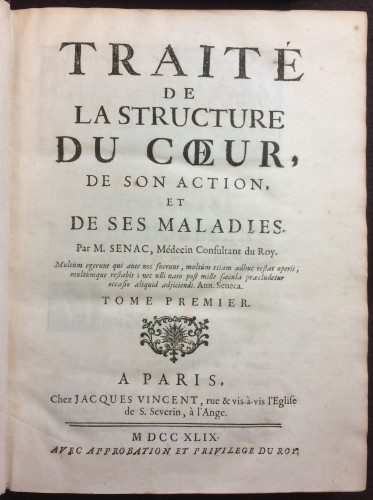
Title page from Jean Baptiste Senac (1693-1770) Traitè de la structure du Coeur, de son action, et de ses maladies (Paris: Jacques Vincent, 1749)

One of 17 Copperplate engravings in the first volume describing the heart, from Jean Baptiste Senac (1693-1770) Traitè de la structure du Coeur, de son action, et de ses maladies (Paris: Jacques Vincent, 1749)
We also acquired a volume containing three different medical treatises published in Paris in 1730. The first is Gideon Harvey's Ars curandi morbos expectatione (The Art of Curing Diseases by Expectation), a ferocious attack against those doctors who impress their patients by displaying an extravagant "medical" activity while in fact they merely wait for nature to cure the disease. The second work was authored by the German physician, George Ernest Stahl, who made Harvey's Ars curandi known in the continent by promoting the publication of its Latin translation, like the one included in this volume. But Stahl's treatise, Ars sanandi, cum expectatione versus arti curandi nuda expectatione: Satyra Harveana (The Art of Curing by Expectation vs. The Art of Curing without Expectation: A Satire against Harvey) is in fact a satirical commentary and criticism of Harvey's work. And the third title bound in this volume is Stahl's treatise on the diversity of the haemorrhoidal circulation and of the fluid of haemorrhoids (De motus haemorrhoidalis, et fluxux haemorrhoidum, diversitate).

Title page from Gideon Harvey (1636/7-1702) Ars curandi morbos expectatione; item De vanitatibus, dolis, & mendaciis medicorum (Paris: Fr. Horth-Hemel, 1730)
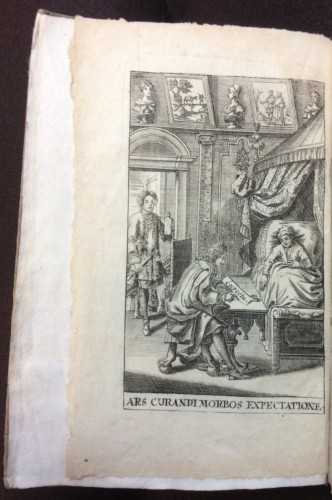
This satirical engraving depicts a doctor showing a prescription to the patient lying in bed: Expecta (wait), while in the background another doctor is holding a large syringe and a bottle with medicine. Engraved frontispiece from Georg Ernst Stahl (1659-1734). Ars sanandi, cum expectatione versus arti curandi nuda expectatione: Satyra Harveana (Paris: Fr. Horth-Hemel, 1730).
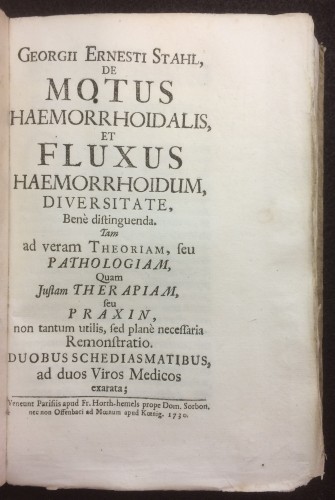
Title page from Georg Ernst Stahl (1659-1734). De motus haemorrhoidalis, et fluxux haemorrhoidum, diversitate (Paris: Fr. Horth-Hemel, 1730).
Our third purchase was a treatise describing the anatomy, physiology, and diseases of the liver (Historia hepatis in anatome, et morbis dilucidata) authored by Giovanni Battista Bianchi and published in 1711.

Title page from Giovanni Battista Bianchi (1681-1761) Historia hepatis in anatome, et morbis dilucidata (Turin: Dutti & Gringhelli, 1711)
And lastly, our fourth purchase using Marty and Marilyn Lindenauer's generous gift was a set of 35 stereoscopic cards depicting each step of an appendectomy operation. In brief, the stereoscope was a visual device that became popular for the teaching of medicine at the end of the nineteenth and beginning of the twentieth century. Its lenses allowed the viewing of cards with pairs of identical images (stereoscopic) as single three-dimensional images.
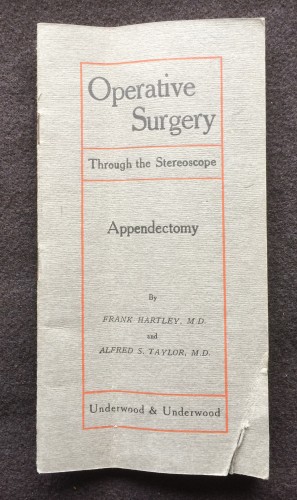
Manual. Frank Hartley & Alfred Swaine Taylor. Operative Surgery through the Stereoscope. Appendectomy (New York & London,: Underwood & Underwood, ca. 1908)

One of 35 stereoscopic cards from Frank Hartley & Alfred Swaine Taylor. Operative Surgery through the Stereoscope. Appendectomy (New York & London: Underwood & Underwood, ca. 1908)
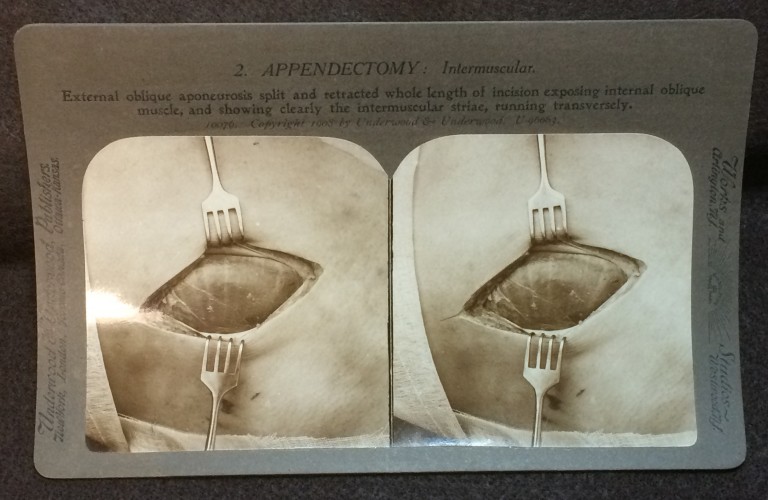
One of 35 stereoscopic cards from Frank Hartley & Alfred Swaine Taylor. Operative Surgery through the Stereoscope. Appendectomy (New York & London: Underwood & Underwood, ca. 1908)